Basil II › Leo III » Ancient origins
Articles and Definitions › Contents
- Basil II › Who Was
- Leo III › Who Was
Ancient civilizations › Historical and archaeological sites
Basil II › Who Was
Definition and Origins
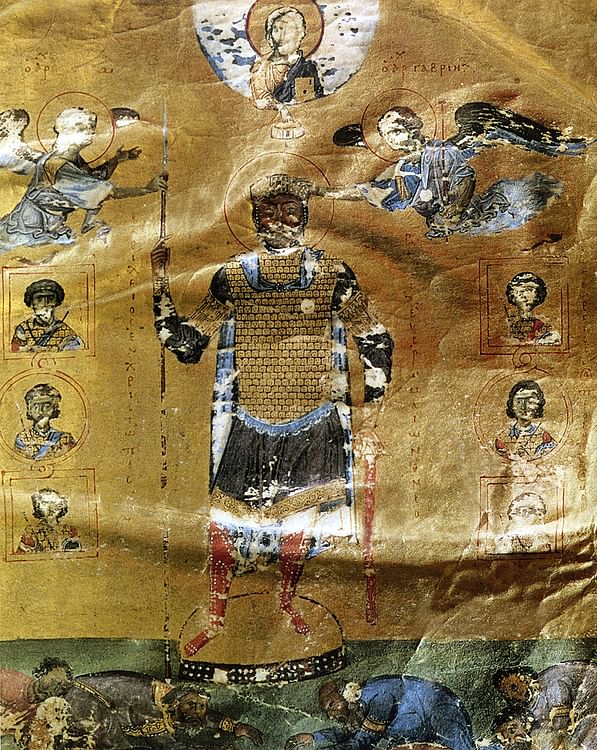
Basil II (aka Basilius II) was the emperor of the Byzantine empire from 976 to 1025 CE. He became known as the Bulgar-Slayer ( Bulgaroktonos ) for his exploits in conquering ancient Bulgaria, sweet revenge for his infamous defeat at Trajan ’s Gate. With a tight hold on Byzantine purse strings and a private army of giant Vikings, Basil got the better of at least two significant usurpers for his throne, reconquered Greece and all of the Balkans, won victories in Syria and doubled the size of the empire. This colossus of Byzantine history is the subject of a biography in the Chronographia of the 11th-century CE Byzantine historian Michael Psellos.
EARLY LIFE
Basil, born in 958 CE, was the son of Emperor Romanos II of the Macedonian dynasty, and when his father died, Basil, aged just five, and his younger brother Constantine jointly inherited the throne. The Empress Theophano, wife of Romanos, acted as their regent and married the general Nikephoros Phokas, who became Emperor Nikephoras II. It was not a happy marriage, and Theophano conspired to murder her husband in his bed in December 969 CE. The general John Tzimiskes then made himself emperor and banished Theophano to a monastery in the same year. Tzimiskes continued to act as guardian for the two young emperors and embarked on a series of successful campaigns in the Middle East. When Tzimiskes died of illness in 976 CE, Basil took his rightful place on the throne of the Byzantine empire. At least on paper, Basil shared the role with his sibling Cecil, but it was very much Basil who ruled in practice.
THERE WAS A LACK OF THE RAZZMATAZZ THAT ONE WOULD EXPECT FROM AN EMPEROR - NO LAVISH PARTIES, FINE ROBES OR FLASHY RINGS.
The young Basil was not a particularly fine physical specimen, although he was skilful at riding a horse. He shunned fine living and was not much interested in literature ; in many ways, he lived the life of an austere monk. Basil was certainly a pious man and was known to carry a statue of the Virgin in battle. These qualities, along with his dour nature, abruptness, and quick temper, combined with a complete lack of trust in anyone, unsurprisingly, did not foster much love and admiration from his subjects. There seemed to be a lack of the razzmatazz that one would expect from an emperor - no lavish parties, fine robes or flashy rings; even when he did wear the purple robes of his office, they were of a duller shade than they might have been. In warfare, too, Basil's campaigns, for all their success, were resolute rather than dashing, but his adroit skills of empire management would earn him respect from his people and fear from his enemies.
DOMESTIC POLICIES
Basil's immediate problem on gaining the throne was to quash a rebellion led by the aristocrat Bardas Skleros, a general who was keen to continue in the privileged position he had enjoyed under previous emperors. Basil prevailed, despite some initial defeats to Skleros in Asia Minor, and was greatly helped by his namesake chief administrator, the gifted eunuch Basil Lecapenus, the parakoimomenos (emperor's chamberlain). Basil II then had to foil another coup, this time involving his disloyal and corrupt chamberlain, which attempted to make Bardas Phokas, an aristocratic clan leader, emperor. Basil the eunuch was exiled in 985 CE. The emperor was now ready to concentrate all his efforts on ruling alone and magnificently, not even marriage or family were allowed to distract him.
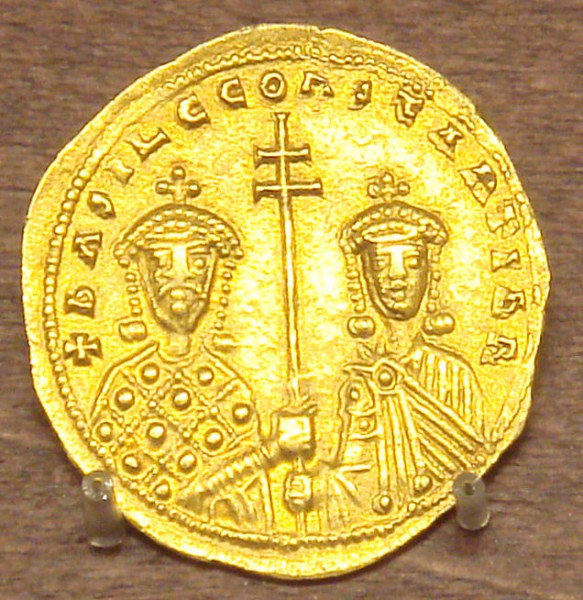
Coin of Basil II
Basil sought to further consolidate his rule by reducing the ever-increasing power of the landed aristocracy and monasteries.Both these groups were expanding their landed interests at the expense of the poorer peasantry, either by purchase or conquest. More importantly for the state, the larger landowners often avoided tax or were simply given exemptions. Basil came up with the simple idea that the large landowners, or dynatoi as they were known, pay the tax arrears of the poor. The new tax plan, known as the allelengyon, met with robust opposition, was not successful and was abandoned by Romanos III in 1028 CE.
Another strategy to further centralise power was to permit payment instead of military service in the provinces, greatly reducing the manpower of local leaders. Basil could withstand the reduction in a wider military force because of his elite troops loaned to him by allied states and, rather cleverly, he used the new tax revenue to pay a new army more loyal to his own interests.This force would come in handy in the second half of his reign.
MILITARY CAMPAIGNS
Basil's first and worst military expedition was in August 986 CE when he suffered a resounding loss to the forces of Samuel of Bulgaria (r. 976-1014 CE) in a narrow Bulgarian mountain pass known as Trajan's Gate. The emperor's army of 60,000 had already suffered an ignominious episode in their failed siege of the Bulgar capital Serdica (Sofia) but now it was wiped out, the colours lost, and Basil forced to flee back to Constantinople. The emperor would have to wait 28 years to gain his revenge, although when it came it would be total.
The consequences of the defeat at Trajan's Gate were the further expansion of Samuel's kingdom into Byzantine lands and the encouragement of two rebellions back home led by Bardas Skleros and Bardas Phokas (him again) respectively. Bardas Phokas even declared himself emperor in 987 CE. Basil, fortunately, could call on the help of Vladimir I of Kiev (r. 980-1015 CE), whose force of 6,000 Vikings bolstered his naval force and assured that the emperor restored order by 989 CE. The rebel army was routed, and three commanders were each given a uniquely tailored death: hanged, crucified, and impaled. There was a price for the assistance from Kiev, and it came in the form of Basil promising that his sister Anna would marry Vladimir, on condition that the latter agreed to be baptised. Both parties honoured their promise, useful as they were to each other as allies. The adoption of Christianity and its promotion by St Vladimir, as he would become, was a momentous action of long-lasting consequence for the Russian peoples.
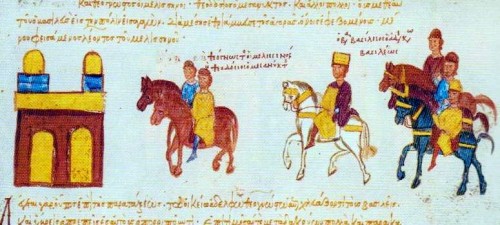
Basil II in Triumph
There were other matters to attend to besides Samuel the Bulgar. Both Antioch and Aleppo in Syria had to be protected from Arab rule and especially the increasingly ambitious Fatimids. Basil himself led a victory in northern Syria in 995 CE when his army had arrived in super-quick time out of nowhere because Basil had issued each man with two mules, one for himself and one for his baggage. The emperor then settled on a long-term policy of hurting the Arabs in their pockets by restricting all trade with the caliph.
Basil's main focus, though, was the west and revenge on the Bulgars. His approach to warfare is here described by the historian JJ Norwich:
Success for Basil depended on faultless organisation. The army must act as a single, perfectly coordinated body.When battle began, he forbade any soldier to break ranks. Heroics were punished with instant dismissal. His men complained about their master's endless inspections; but they gave him their trust because they knew that he never undertook an operation until he was certain of victory. (211)
The emperor was relentless, and after years of campaigns in both summer and winter, he won back Greece for Byzantium(997 CE), and then Pliska (1000 CE), Skopje (1004 CE) and Dyracchion (c. 1005 CE), amongst many other cities. In 1014 CE Basil finally won a great and decisive victory against the Bulgars at, appropriately enough, another mountain pass, this time at Kleidion in the Belasica Mountains. Over 15,000 of the enemy army were captured. The emperor, remembering his defeat to Samuel, carried the Byzantine tradition of mutilating the enemy to the extreme and blinded his captives, sending them back to their leader in groups of 100, each led by a one-eyed guide. Samuel was said to have died of a shock-induced stroke shortly after receiving this ominous sign of Basil's pitiless wrath.
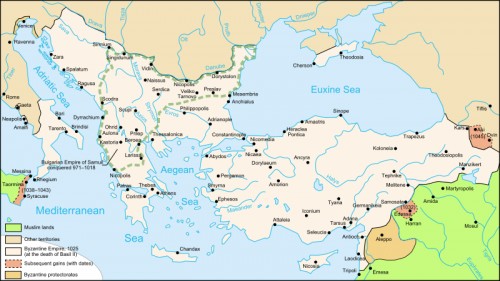
Byzantine Empire, 1025 CE
After some limited resistance led by Samuel's sons, ultimately, the Bulgar lands were incorporated into the blossoming Byzantine empire, and Basil marched victorious into Serdica in 1018 CE. The unpleasant memory of Trajan's Gate was finally erased. Basil proved more generous with his new subjects than their army. He kept taxes low - allowing payment in kind instead of the usual gold, allowed certain provinces to remain under local, princely rule, gave certain nobles high office within the empire, and permitted the Bulgarian Church to remain independent from Constantinople with the only proviso that Basil select the archbishop.
DEATH
Basil kept on campaigning to the end, with more successful adventures in Georgian Iberia and Armenia in 1021-22 CE, where he captured Vaspurkan. His territories stretched even into Mesopotamia and were consolidated by dividing the conquered regions into new provinces of the empire. Italy, too, was reorganised, and a campaign was prepared to once more face the Arabs, this time in their last stronghold in the West, Sicily. Before these plans could come to fruition, though, Basil died on the 13th or 15th of December 1025 CE. He had almost doubled the empire which now "stretched from Crete to the Crimea, and from the Straits of Messina and the River Danube to the Araxes, Euphrates, and Orontes rivers" (Mango, 80) or, to put it another way, Byzantium was now "a superpower on two continents" ( ibid, 176).
The emperor should have been buried in a splendid sarcophagus waiting for him alongside his predecessors in the Church of the Holy Apostles in Constantinople, but Basil preferred a more simple tomb in a smaller church outside the city. His final resting place carried the following inscription:
From the day that the King of Heaven called upon me to become the Emperor, the great overlord of the world, no one saw my spear lie idle. I stayed alert throughout my life and protected the children of the New Rome, valiantly campaigning both in the West and at the outposts of the East…O, man, seeing now my tomb here, reward me for my campaigns with your prayers.(Herrin, 219)
LEGACY
Basil's near-50-year reign had ensured the Byzantine empire was at its very zenith, as the historian ERA Sewter here explains in his introduction to his translation of the emperor's biography by Psellus:
Basil had devoted all his energies to the business of ruling; he had never married, spent most of his time on or near the frontiers, developed a war -machine of terrifying efficiency, coveted autocracy, but despised its outward symbols. He crushed rebellions, subdued the feudal landowners, conquered the enemies of the Empire, notably in the Danubian provinces and the East. Everywhere the might of Roman arms was respected and feared. The treasury was overflowing with the accumulated plunder of Basil's campaigns. Even the lamp of learning, despite the emperor's known indifference, was burning still, if somewhat dimly. The lot of ordinary folk in Constantinople must have been pleasant enough. For most of them life was gay and colourful, and if the city's defensive fortifications were at some points in disrepair they had no cause to dread attacks. (12)
With Basil having no children, the title of emperor resorted back to his brother Constantine, who ruled as Constantine VIII from 1025 to 1028 CE, and his daughters Zoe and Theodora. Unfortunately, Basil's successors would squander their inheritance within a generation or two. The once great empire's fortunes would wain, with none more tangible and symbolic an indicator than the ever-dwindling gold content of Byzantine coins. The 24-carat halcyon days of Basil II would, alas, never be repeated.
Leo III › Who Was
Definition and Origins

Leo III was emperor of the Byzantine Empire from 717 to 741 CE. He founded the Isaurian dynasty which ruled until 802 CE.The emperor was a talented administrator, and he revamped the empire ’s political apparatus and legal code. Leo's reign also saw several conflicts with the Arab world beginning with the successful defence of Constantinople and ending in the reconquest of Asia Minor. The emperor is best remembered today for beginning the destruction of icons in the Christian church which his successors pursued with even more passion, leading to a widening of the gap between the western and eastern Church.
SUCCESSION
Leo, born Konon, was a shepherd in Thrace whose parents had relocated there from Syria. Despite his humble background, the ambitious Leo would push himself to the very top. A diplomat by the reign of Justinian II (r. 685-695 CE), he had assisted the emperor in regaining his throne in 705 CE after working his way up the ranks of the army. By the reign of Anastasios II (713-716 CE) Leo was the governor ( strategos ) of the military province ( theme ) of Anatolikon in central Asia Minor and, as such, had real political power. In 717 CE Leo joined forces with his fellow strategos Artabasdos, who governed Armeniakon in northeast Asia Minor. The latter was promised the title of curopalates, one of the three highest ranks in the empire if Leo's bid for ultimate power was successful. Facing and defeating a small army of the emperor at Nicomedia, the conspirators deposed Anastasios' successor, Theodosius III (r. 716-717 CE).
AFTER THE PEOPLE HAD SEEN FOUR EMPERORS IN SIX YEARS, LEO WOULD FINALLY PROVIDE THE EMPIRE WITH SOME STABILITY.
Theodosios was exiled to a monastery at Ephesus while Leo entered Constantinople in triumph as emperor on 25 March 717 CE. After the people had seen four emperors in six years, Leo would finally provide the empire with some stability. The new emperor was not, then, from Isauria (southern Asia Minor) but the later chronicler Theophanes the Confessor (dc 818 CE) described him as such, and the name has stuck for his dynasty, the Isaurian, which included three more emperors and one empress, lasting until 802 CE.
MILITARY CAMPAIGNS
Leo's reign hit an immediate crisis when his capital Constantinople was besieged by an Arab force led by the brilliant general Maslama. Indeed, one reason why the Church and nobles of the empire so readily accepted Leo as their new emperor may well have been due to the imminent threat to the capital. The siege began in August 717 CE, conducted by an Arab army of 80,000 men and a fleet of 1,800 ships. It would last a year, but the city, protected by its formidable fortifications and the secret incendiary weapon of Greek Fire, withstood the onslaught. When the Bulgar khan Tervel sent a relieving force to aid his ally of convenience Leo, Maslama's army, already weakened by an unusually harsh winter, famine, and disease, was forced to withdraw on 15 August 718 CE. The saving of the city was commemorated each year, thereafter - Byzantium and the most important Christian city outside Jerusalem could breathe a huge sigh of relief.
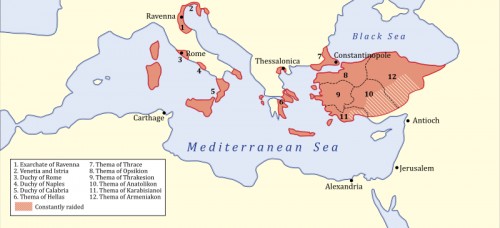
Byzantine Empire, 717 CE
Leo, having proven his defensive skills, next went on the offensive to try and regain some of the huge territorial losses the empire had sustained in recent decades. Attacking the Arabs in western and southern Asia Minor, he won several battles, notably at Nicaea in 726 CE. Leo's alliances with the Georgians and Khazars were proving very useful, especially the latter who, hailing from an area north of the Black Sea, could attack the rear of the Arab forces. The semi-nomadic Khazars had well-established ties with Constantinople, Justinian II having married the khan's daughter, and Leo sensibly ensured the good-relations continued by having his son marry one of the present khan's daughters. Then, in 740 CE, the decisive blow came, and the Byzantine army won a great victory at the battle of Akroinon in Phrygia which forced the Arabs to withdraw from the region. The conquered territories were organised into two new themes of the empire: Thrakesion and Kibyrrhaiotai.
ICONOCLASM
The idea that the Christian worship of religious images is idolatrous goes back to the Old Testament but over the centuries icons (that is images of holy persons: Jesus Christ, the Virgin Mary and saints) had become a normal feature of many churches. Leo III was the first ruler to involve himself in the debate, and he supported iconoclasm, that is the “breaking of images.” Quite what motivated Leo besides personal conviction is unclear. Byzantine Christian historians, all of whom, significantly, were in favour of icons, propose that the emperor was unduly influenced by Jews and Muslims, but modern historians discount this as unlikely. Alternatively, there may have been a belief that the terrible losses to the Muslim armies of the Arab Caliphate prior to Leo's reign were because God was displeased to see his image plastered on the walls of his churches and elsewhere. It may be that, as God's representative on earth, the Byzantine emperor merely wished to exercise his right as he saw it to dictate not only political policies but ecclesiastical ones too. The exact motivations are lost in the mists of time, but the consequences would resound for centuries.
Leo began his campaign of smashing icons with the biggest of them all, insisting that the golden image of Jesus Christ above the ceremonial entrance of his own royal palace, the Chalke, be removed. A riot of protestors broke out, and rumblings of discontent could be heard everywhere from Ravenna to Greece. A more formal statement of intent was needed, and so, in 730 CE, Leo officially decreed that all religious images and relics must be destroyed. To ensure his wishes were carried out, the emperor dismissed Germanos I, the Patriarch (bishop) of Constantinople who had objected to his decree and replaced him with Anastasios, a staunch iconoclast. Monasteries (which produced the icons), several bishops, and a great many ordinary Christians still wished to venerate their images, though, and a great rift in the Byzantine Church was opened which would only partially close towards the end of the 8th century CE and return again in 9th century CE.
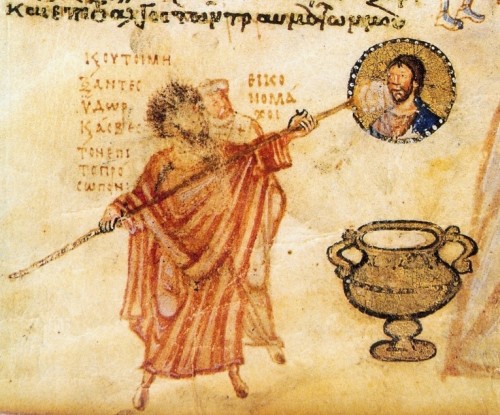
Byzantine Iconoclasm
As with most persecutions, the effect was to drive iconophiles underground and to continue their veneration in secret, although, Leo seems largely to have concentrated his efforts on destroying the images themselves rather than the people who venerated them. People who protested on the spot against the destruction of images at sacred sites were imprisoned, but iconophiles were not pursued individually - yet.
The popes had long been in favour of the use of icons in holy places and so it came as no surprise that Pope Gregory II protested about the policy, and his successor Gregory III, too, but without any effect. The popes were none too pleased either that a former shepherd was now deciding Church dogma. Leo pressed on regardless and used the debate as an excuse to withdraw the ecclesiastical administration of Sicily, Calabria, and Illyricum (in the Balkans) away from papal authority to that of the Patriarch of Constantinople. The Byzantine emperor sent a task force to Rome with the express purpose of arresting the Pope (it never got there, floundering in a storm), and the Pope responded by proclaiming anyone destroying icons would be excommunicated. It was the beginning of a messy, bitter, and irreconcilable split in the western and eastern Churches, not to mention one of the greatest assaults in history on art and religious relics.
ADMINISTRATIVE & LEGAL REFORMS
A keen and able administrator, Leo was fully aware that his own path to the throne might well be followed by another ambitious strategos, and so he divided some of the Empire's bigger themes into smaller units and centralised government in general to reduce the power base of the military governors. Anti-corruption measures were taken such as the introduction of salaries for judges to make them less liable to take bribes. In 721 CE coinage was improved by the addition of the silver miliaresion, worth one-twelfth of a gold nomisma ( solidus ).
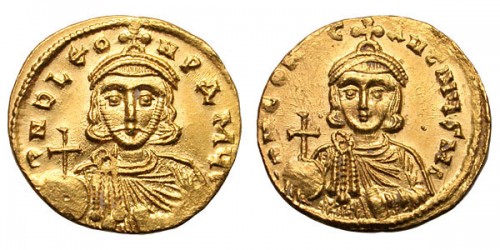
Leo III & Constantine V
Regarding other legal affairs, in 726 CE (or possibly 741 CE) Leo introduced a new manual on Byzantine laws called the Ecloga ; replacing and updating the old and often contradictory Justinian code of 529 CE, its laws would not be superceded for another 150 years. One of the changes was to replace the practice of punishing many crimes with the death penalty for mutilations such as cutting off the nose, blinding, and removing a hand or the tongue. Below are some example laws relating to personal relationships from the new code:
- A married man who commits adultery shall by way of correction be flogged with twelve lashes; and whether rich or poor he shall pay a fine.
- An unmarried man who commits fornication shall be flogged with six lashes.
- A person who has carnal knowledge of a nun shall, upon the footing that he is debauching the Church of God, have his nose slit [cut off], because he committed wicked adultery with her who belonged to the Church.
- The husband who is cognizant of, and condones, his wife's adultery shall be flogged and exiled, and the adulterer and the adulteress shall have their noses slit.
(Gregory, 202)
Other legal reforms included making divorce more difficult, protecting the rights and property of married women, outlining an impressive list of sexual crimes and generally incorporating a strong influence from Christianity. Instead of the usual Latin, the new laws were written in the wider-known Greek language to help their practical application in everyday life by judges, governors, and lawyers across the empire; the Ecloga was also translated into the Armenian and Slavic languages, amongst others. It was the first time that ordinary people could access and understand the laws according to which they were supposed to conduct themselves.
DEATH & SUCCESSOR
Leo made his son Constantine co-emperor in 720 CE and put him on Byzantine coinage to spread the message that a dynasty had been founded. When Leo died in his sleep in 741 CE - a rare luxury for a Byzantine emperor - Constantine took his rightful place, and he would reign as Constantine V until 775 CE. He continued his father's military successes, notably against the Bulgars in the Balkans and the Arabs in Syria and Armenia. Constantine continued to vehemently attack the veneration of icons but went even further than his father, insisting only the True Cross was a suitable image to be seen within churches and actively persecuting iconophile Christians.
LICENSE:
Article based on information obtained from these sources:with permission from the Website Ancient History Encyclopedia
Content is available under License Creative Commons: Attribution-NonCommercial-ShareAlike 3.0 Unported. CC-BY-NC-SA License